Do You Really Need Expensive Running Shoes?
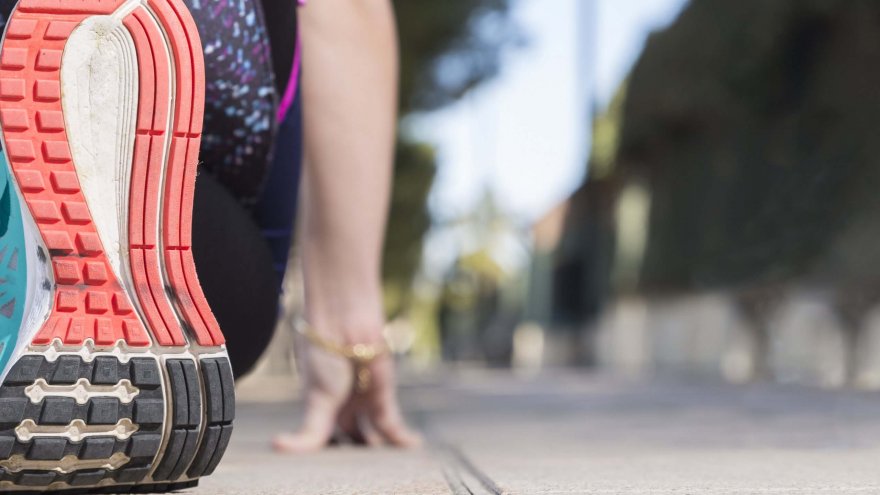
“Start running,” they said. “It’s an inexpensive hobby!” they said. “All you need is a pair of shoes!”
Okay, so first, I don’t disagree that you can run with very few things. In theory, you don’t need much more than a pair of shoes. Of course, if my husband is reading this, he would strenuously disagree with the “inexpensive hobby” portion. I have running stuff on top of my running stuff.
I would argue that your shoes are the most important piece of equipment a runner has. After all, you can’t spend time on your feet if they hurt all the time.
If you google running shoes, you will find some that are super expensive as well as bargain-bin pricing. You may find yourself asking if you need to spend top dollar on shoes, or if affordable running shoes will suffice.
5 Key Tips For Choosing Good Running shoes
Once you start searching for running shoes, you are likely to figure out that there are a lot of styles and brands out there. How do you choose what is right for you? And if you are on a budget, can you find affordable running shoes that will work for your feet?
Some basic tips for choosing running shoes are as follows:
Running Shoe Store: Go to a store that specializes in running shoes.
Timing: Try on shoes late in the day. This is when your feet will be swollen from walking around.
Size Up: Most runners size up anywhere from 1/2 to 1 full size.
Width Matters: Don’t skimp on width. You want to be sure your feet have plenty of room in there.
Both Shoes: Try on both shoes and be sure you move around in them. Good running shoe stores offer either a treadmill or a place outside to try the shoes out.
Essential Questions To Ask Yourself Before Buying A Pair
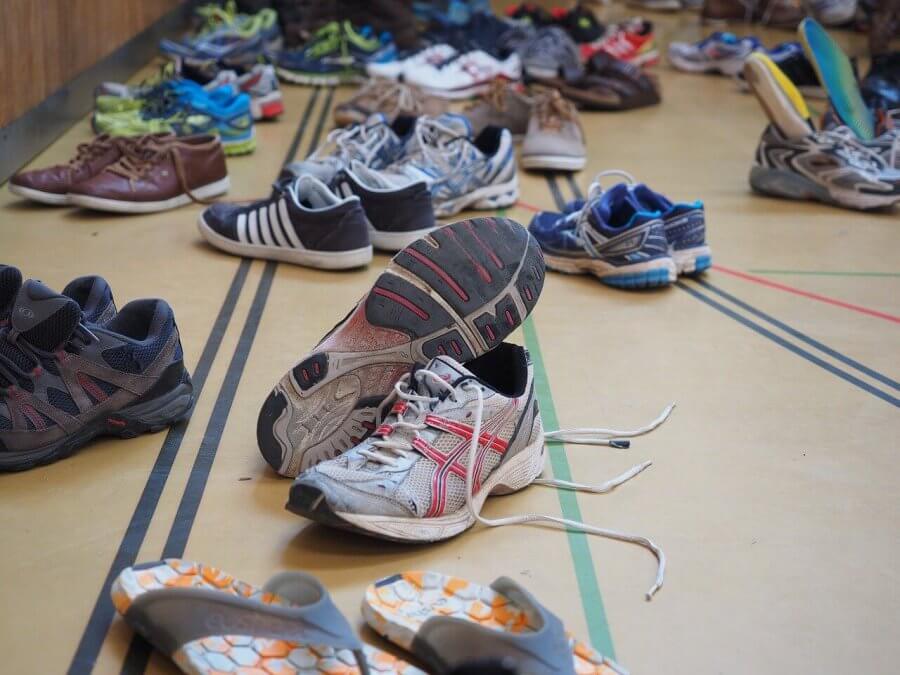
There are some questions you should be able to answer before you head to purchase shoes.
- Mileage: How much mileage do you plan to put on each week and month?
- Surface: Where do you do your primary running? Are you planning to run on trails? Dirt? Asphalt? Concrete?
- What kind of running do you do? If you do a lot of speed work, you might look for both trainers and more lightweight track shoes. If you run a lot of trails, you may be best suited to a trail-specific shoe. If you mix things up a lot but run relatively low mileage, a basic running shoe might be fine for you.
- Stability or neutral: If you don’t know if you need a neutral or a stability shoe, you definitely want to enlist the help of a running salesperson to get you started.
The 4 Running Shoe Cost Influencers
What things bring up the price of a pair of shoes? One big factor is weight. For runners who are very serious about their racing, they want the lightest pair of shoes they can run in without risking injury. That lightness is worth money to them.
Some brands are simply more expensive than others, which makes sense. The same is true of most products on the market today. With these brands, you get a tradition of excellence and often, a product that the company will stand behind if you are dissatisfied.
Cushion can also cost more money. If you want to feel like you are running on a cloud, you will pay for that.
Design also has an impact. Look at the Nike Vaporfly, for example. At upwards of $250 a pair, you might wonder if they do the running for you. First, let me assure you they do not do the work, you still have to. But design improvements take time and cost a company money. It’s that simple!
Neutral, Stability or Motion-Controlled Shoes?
There are basically three types of shoes: neutral, stability and motion-controlled. Mild pronators and some supinators lean toward a neutral shoe. Some runners prefer more control or stability. Mild to moderate pronators often prefer a stability shoe. Motion-controlled shoes are for those with the most severe over-pronation.
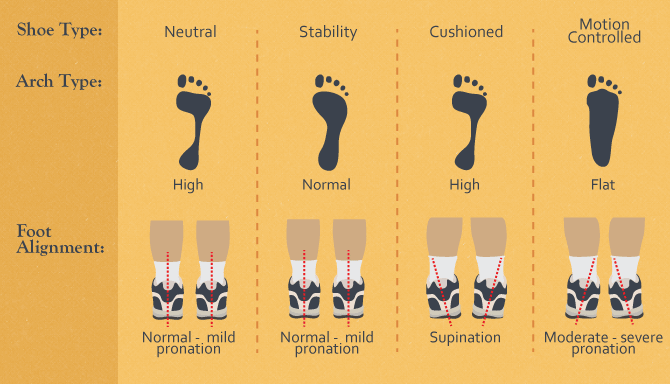
Do your research ahead of time. Some brands are known for having a narrow toe box, for example. If you routinely form a callus on your toe, you may need a wider toe box.
A Note for Overpronators

For years, runners have been pushed to stability shoes if they overpronate. Now the minimalist movement has taken the running scene by storm and proponents of that would have you running in the least amount of support your feet will tolerate without injury. Let’s talk about pronation and injury prevention.
Overpronation is when the ankle rolls too far down and in with every step. Typically seen in people with flat feet, overpronators usually push off with the big toe and then experience a twist of the ankle. This excessive amount of rotation leads to instability in the foot. See why they are called stability shoes?
The idea behind stability shoes is that the shoe prevents some of that motion from happening.
Supinators: Read This!
Runners who supinate have a rolling motion to the outside of the foot. In supinators, extra work is done by the smaller toes and outer edge of the foot. This can result in certain injuries because it places extra stress on that portion of the foot.
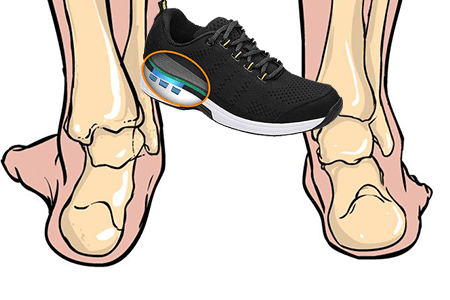
Often seen in people with high arches, supinators are usually steered toward cushion shoes that are also flexible.
Is It Worth Buying Expensive Running Shoes?
If you are asking yourself if expensive running shoes make a difference, they sure can. It also depends on what your idea of expensive is. Here’s the thing. When I first started running, I thought $50 was a lot of money for a pair of shoes.
I purchased my first pair for about that amount with zero guidance from someone who knew about running and, well, I got what I paid for. Plagued with foot pain, I was not a happy runner. After a bit, I spoke to a friend who sent me to a running store to get fitted for a decent pair of shoes. I left the store with a $140 pair of shoes in my arms.
When I got home and laced them up, I have to admit it was like running on a cloud. The old shoes were relegated to mowing the lawn.
Do You Really Need Expensive Running Shoes?
Do you need them? No. Do some people want them? Yes. Are there some advantages of some of the more costly shoes? Of course. However, you don’t need them. Especially if you are a recreational runner.
Heck, I have a friend who is an ultramarathoner streak runner who wears a pair of shoes until they are falling apart. And he purchases his running shoes as last year’s model to save money.
The fact of the matter is that you can find affordable running shoes if you look. My favorite hack? Just like the friend I mentioned above – I purchase the model from the year prior.
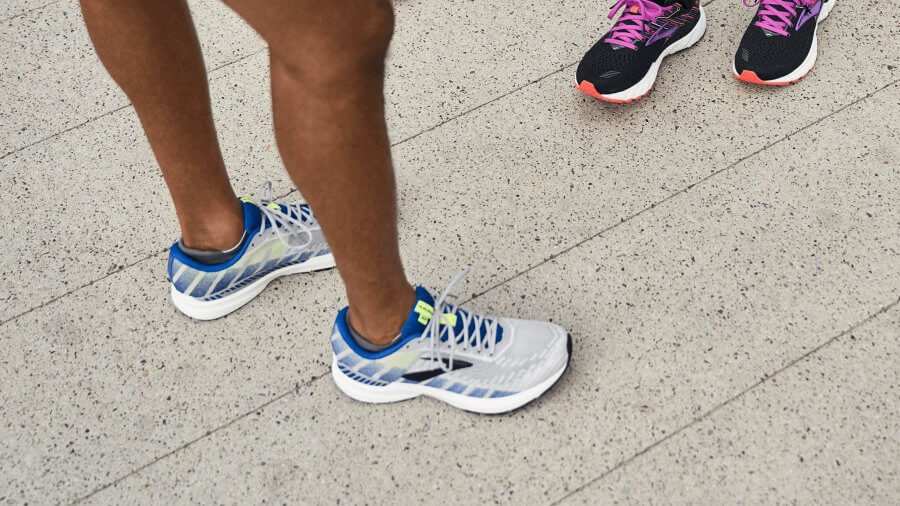
My favorite shoe is the Brooks Ravenna. They retail for roughly $120. Sure, I could pay that when the newest model comes out, but I don’t. As soon as the new model releases I start scoping the sales for last years’ model. When those get discounted, I pull the trigger.
I may not be getting the newest bells and whistles, but I know I am getting a quality shoe that I can depend on to get me through a lot of miles. I save myself anywhere from $40 to $60. Sometimes I grab a couple of pairs and keep them set aside until I need them.
I rotate shoes as most runners do, but mine are all Ravenna’s. Some runners rotate different styles, models and brands. These runners have even more opportunities to find shoes on sale.
If you are always looking, you would be surprised what you can find!
Latest Articles
 Is Running on a Treadmill Easier Than Running Outside?Runners have their own preferences, whether it is treadmill running, running outside on the road, or exploring trails. So...
Is Running on a Treadmill Easier Than Running Outside?Runners have their own preferences, whether it is treadmill running, running outside on the road, or exploring trails. So... Is It OK to Use Trail Running Shoes on the Road?While trail running shoes can be used on roads, especially in situations where a runner encounters mixed terrains or pref...
Is It OK to Use Trail Running Shoes on the Road?While trail running shoes can be used on roads, especially in situations where a runner encounters mixed terrains or pref... How to Fix Sore Quads After Running?Rest, ice, gentle stretching, and over-the-counter pain relievers can help soothe sore quads after running. Also, ensure ...
How to Fix Sore Quads After Running?Rest, ice, gentle stretching, and over-the-counter pain relievers can help soothe sore quads after running. Also, ensure ... 10 Fruits With The Most Electrolytes to Replace Sports DrinksThese fruits are high in electrolytes such as potassium, magnesium, and calcium, essential for hydration, muscle function...
10 Fruits With The Most Electrolytes to Replace Sports DrinksThese fruits are high in electrolytes such as potassium, magnesium, and calcium, essential for hydration, muscle function...

